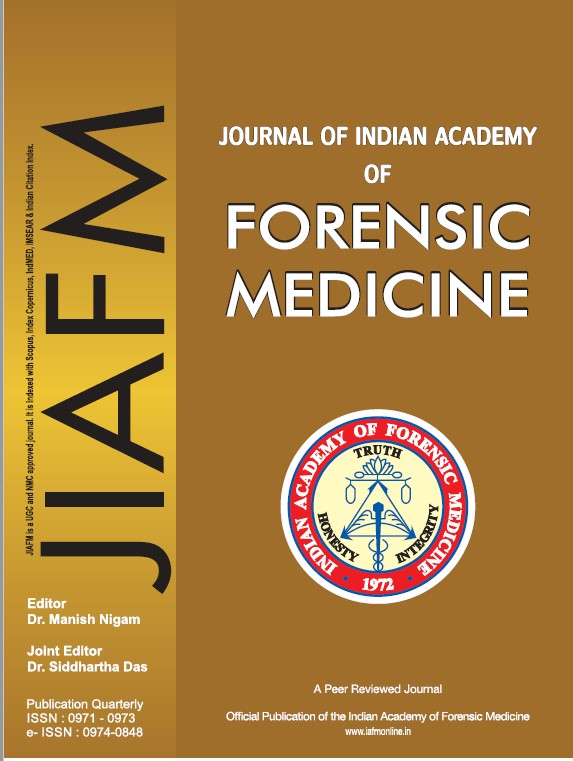Variation in Resource Supply of Mortuary for Autopsy at Tertiary Care Center - A Nation-Wide Survey
DOI:
https://doi.org/10.48165/jiafm.2024.46.1.9Keywords:
Medico-legal, Resources, Mortuary, HealthcareAbstract
Mortuaries and medicolegal services are essential support services to the administration of healthcare. There is a lack of information and uniformity regarding various resource supplies especially day to day consumables for medico-legal services in India. For this reason, a study was undertaken to evaluate the current status of mortuaries and resource supplies for autopsy work as well as the elements that contribute to it. A cross sectional study was conducted in several Indian tertiary care facilities using both qualitative and quantitative methods of data analysis. 74 faculty members from 71 institutes, including 5 AIIMS and AFMC Pune, participated in this study using data from 61 districts across 19 states and the union territories. Information about these health care institutions was gathered using a Google form that included 18 carefully crafted questions with options to observe and interview the faculties who are directly related to autopsy work. Across all the health care facilities we looked and discovered a wide range in resource availability and reluctance on the part of the institute to provide various resources for postmortem services.
Polythene and cloth to wrap the body after the postmortem were arranged by relatives and NGOs in 34% and 46% of institutes, respectively; even in 14% of institutes, containers for the preservation of viscera have been arranged by relatives of the deceased. In 57% of institutes, doctors and 45% of institute mortuary workers are not receiving any postmortem allowance; in 30% of institutes, doctors received less than 500 rupees; and in 22% of institute mortuary workers received less than 50 rupees. In 39% of institutes, mortuary workers are outsourced by the institute on a temporary basis, and in 24% of institutes, departmental sweepers are employed as mortuary workers. Most mortuaries did not have adequate and trained human resources. Thus the present study attempts to highlight the variation of resource supply for medico-legal cases in autopsy block, mortuary workers, their recruitment method, and the lowest rank of investigating officer handling PM, highlights the value of uniform guideline for these services at institute, state or national level.
Downloads
References
Aggarwal A. Textbook of Forensic Medicine and Toxicology. 2nd ed. Himachal Pradesh: Avichal Publishing Company; 2021 Pages- 214.
Reddy KSN, Murthy OP. The Essentials of Forensic Medicine and Toxicology. 33st ed. Hyderabad, India: K. Sugunadevi; 2014. Pages- 21
Sirohiwa. l B. L., Paliwal, P. K., Sharma, L., Chawla, H. Design and Layout of Mortuary Complex for a Medical College and Periphera Hospitals. J Forensic, (2011) Vol. 2:6 102e. doi:10.4172/2157-7145.1000102e.
Hallgrimur, B., Whitelaw, j., and Indrojit, R. Pathology Services in deveoloping Countries. A Challaenge. Archives of Pathology & Laboratory Medcine, (2007) Vol 131 (11), pp 1636- 1639.
BPRD ministry of home affairs government of India. "Standardization of Equipment and Other Facilities for Post Mortem at District HOs" Micro-Mission: 04; Promoting Good Practices and Standards p-97-105.


